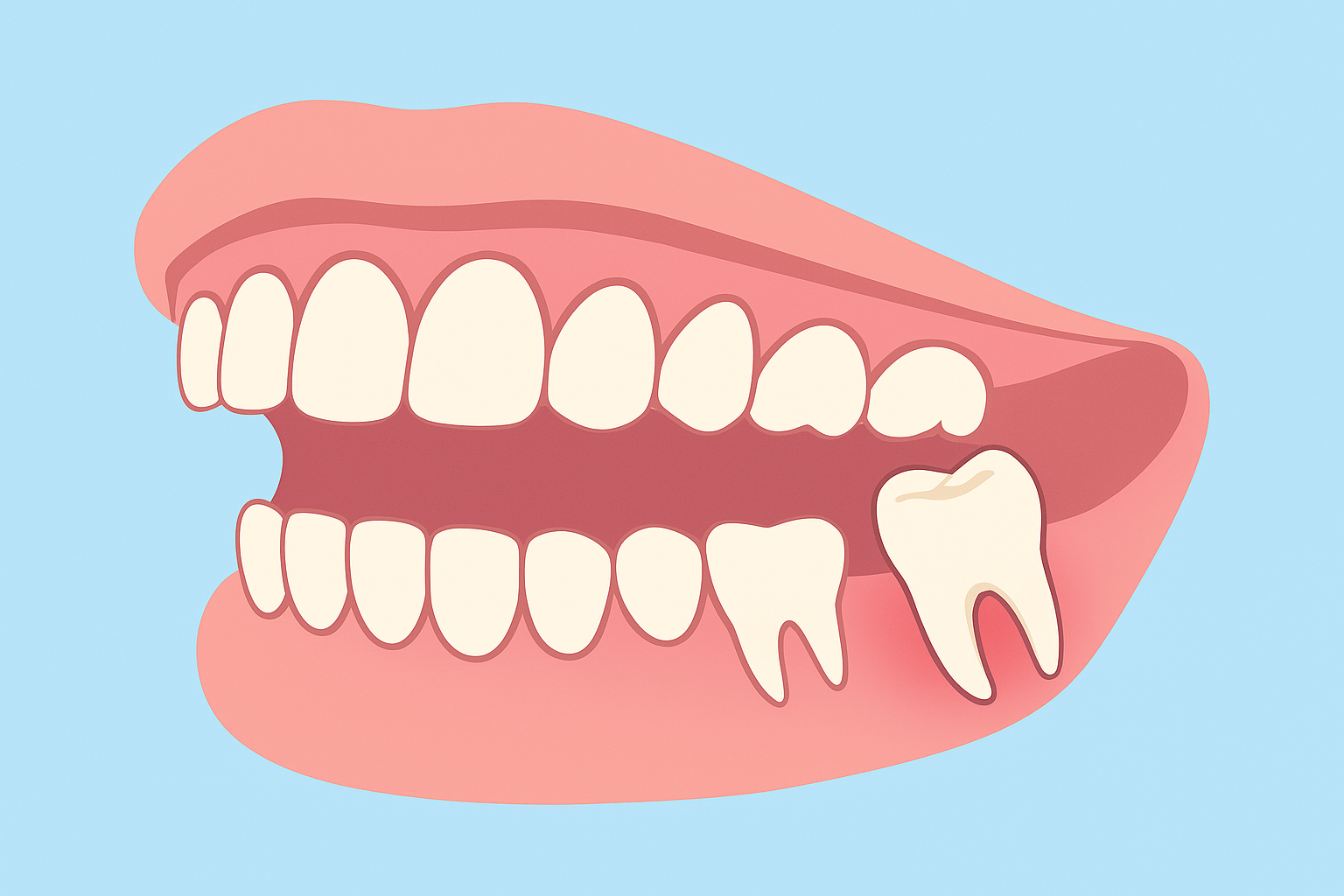Early Signs You Need a Third Molar Extraction

Third molars, also known as wisdom teeth, are the last teeth to erupt and often create problems. Because they usually emerge when the jaw has fully developed, these teeth can become impacted, infected, or misaligned. Recognizing the early signs you need a third molar extraction can prevent serious oral health issues and make treatment smoother.
This guide covers the warning signs, underlying causes, and when to seek professional care to help you make informed decisions about your dental health.
Why Spotting Wisdom Tooth Problems Early Matters
Wisdom teeth usually erupt between ages 17 and 25. Limited jaw space often causes them to grow at an angle, remain partially trapped, or push against nearby teeth. Detecting issues early prevents:
- Pain and swelling
- Gum infections
- Jaw stiffness
- Crowding or shifting teeth
- Damage to surrounding molars
- Complex surgical procedures later
If you want a detailed overview, the blog on signs you need your wisdom teeth removed is a helpful reference for early symptoms.
Why Third Molars Often Cause Issues
Third molars emerge late, which can cause problems because of limited space. They can erupt sideways, partially emerge, or become fully impacted. This positioning makes cleaning difficult, increasing infection risk.
For patients curious about complications, reading about impacted wisdom teeth symptoms you shouldn’t ignore can help explain why these teeth are problematic.
Early Signs You May Need a Third Molar Extraction
Recognizing these symptoms early allows you to address problems before they worsen.
Persistent Tooth Pain or Jaw Pressure
Pain is often the first symptom. It may start mild and become constant as the tooth emerges or presses against nearby teeth. Many patients find reassurance in understanding the common myths about wisdom tooth removal, which clarifies what pain is normal versus a warning sign.
Typical pain patterns include:
- Dull, throbbing ache behind the last molars
- Sensitivity when chewing
- Intermittent sharp pains
- Discomfort radiating toward the ears
Swollen or Irritated Gums
Wisdom teeth can cause gum inflammation as they try to emerge.
Watch for:
- Red or swollen gums
- Tenderness behind the last molar
- Bleeding while brushing
- Soreness around partially erupted teeth
These symptoms may indicate pericoronitis or early infection.
Bad Breath or Unpleasant Taste
Partially erupted teeth create pockets that trap bacteria.
Warning signs include:
- Persistent bad breath
- Foul or metallic taste
- Pus or fluid from the gums
- Recurrent soreness
Ignoring these signs may lead to repeated infections, which is why timely removal is often recommended.
Headaches or Earaches
Pressure from wisdom teeth can radiate beyond the jaw.
Symptoms can include:
- Headaches at the temples or back of the head
- Ear pressure or pain
- Jaw tension or soreness
- Discomfort opening the mouth
These issues are frequently relieved after extraction.
Difficulty Opening Your Mouth
Limited jaw mobility, or trismus, often indicates inflammation or infection. This can affect chewing, speaking, and yawning.
Teeth Crowding or Shifting
Wisdom teeth can disrupt alignment and undo orthodontic work. Early signs include:
- Tightness in front teeth
- Overlapping or shifting teeth
- Pressure along the dental arch
- Minor gaps forming
For clarification on misconceptions, the article on common myths about wisdom tooth removal explains that while not all crowding is caused by wisdom teeth, they frequently contribute.
Recurring Gum Infections
Pericoronitis is a recurring infection when bacteria collect under partially erupted gum tissue. Symptoms include:
- Jaw swelling
- Pain when swallowing
- Fever or warmth
- Pus from the gums
This is a strong indication for extraction.
Cysts or Jaw Stiffness
Cysts may form around impacted teeth, damaging the jaw and nearby teeth. Stiffness or jaw locking may also signal deeper problems.
When to See a Dentist or Oral Surgeon
You should seek professional care if you notice:
- Persistent pain
- Swelling behind molars
- Recurrent infections
- Difficulty chewing
- Fever or mouth opening issues
Modern treatments like the laser-assisted apicoectomy: the future of periapical surgery demonstrate how oral surgery techniques have advanced, making evaluations safer and recovery faster.
What to Expect During an Evaluation
A dentist will conduct:
- X-rays – Determine tooth position, angulation, and potential nerve involvement.
- Oral Exam – Check for swelling, infection, and cavities.
- Risk Assessment – Evaluate jaw size, alignment, and likelihood of future problems.
Why Extraction Is Often Recommended
Examination usually leads to extraction if the teeth are:
- Impacted
- Causing pain or infection
- Contributing to crowding
- Difficult to clean
- Damaging nearby teeth
Early removal ensures easier procedures and faster recovery.
The Extraction Procedure
Most extractions are done under local anesthesia, sedation, or general anesthesia.
Steps include:
- Examination and planning
- Administering anesthesia
- Tooth removal (sometimes in sections)
- Cleaning and suturing
- Post-op care instructions
Recovery and Healing
Recovery generally takes 7–10 days. Tips include:
- Resting and limiting activity
- Eating soft foods
- Using ice packs for swelling
- Avoiding smoking or straws
- Gentle oral hygiene
Proper care reduces the risk of complications such as dry socket.
Preventing Future Wisdom Tooth Problems
Even asymptomatic teeth can benefit from preventive evaluation.
- Attend regular dental checkups
- Monitor bite changes
- Follow X-ray schedules
- Address early symptoms promptly
Preventive removal in younger adults usually results in easier healing and fewer complications.
Final Thoughts
Wisdom tooth problems rarely resolve on their own. Pain, swelling, and shifting teeth are early warning signs. Acting promptly by consulting your dentist ensures simpler treatment, fewer complications, and better long-term oral health.

Wisdom Teeth and Headaches: Is There a Connection?
July 2, 2025

Should You Keep Your Wisdom Teeth? Understanding the Long-Term Effects
November 17, 2025

Ice vs Heat: What Works Best for Wisdom Tooth Pain?
December 5, 2025

Can You Smoke or Vape After Wisdom Tooth Removal?
December 1, 2025

Alcohol After Wisdom Teeth Removal: Is It Safe?
December 4, 2025